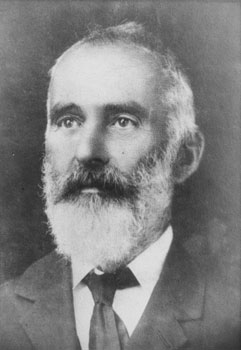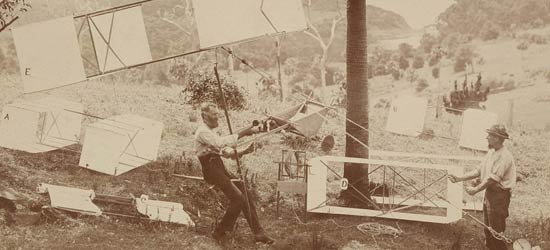Hargrave's flying machines
Lawrence Hargrave (1850 - 1915) was a gifted explorer, astronomer and practical inventor whose important experiments with box kites proved basic theories of flight.
His first designs for aerial craft appeared in his notebooks around 1872. Many of his early models were ornithopters, which used flapping wings. In 1887, one of his ornithopters flew 82 metres and by the end of 1892 he had constructed 16 different model flying machines.
> View animations of Hargrave's ornithopters based on photographs by Charles Bayliss, 1889
A meticulous worker, Hargrave understood the importance of recording the diversity of his experiments. Not only did he think that man-made flight was inevitable, but he realised public demand for rapid travel would facilitate the process.
Lawrence Hargrave, c. 1910, by unknown photographer
Photograph P1/Hargave, Lawrence
His later designs were based on kites and then a rigid, stable aeroplane. Hargrave's research and experimentation proved basic theories of flight, but he is best known for his development of the cellular kite.
Hargrave began experimenting with kites in 1893. The following year, he demonstrated that four kites attached to one rope could lift 109 kilograms over 5 metres off the ground in a 21 knot wind. He straddled a trapeze below a train of box kites and was lifted into the air at Stanwell Park on 12 November 1894.
Detail from Lawrence Hargrave and his kites at Stanwell Park, 1894, by Charles Bayliss
Photograph PXD 704 (vol.4 no.5)




